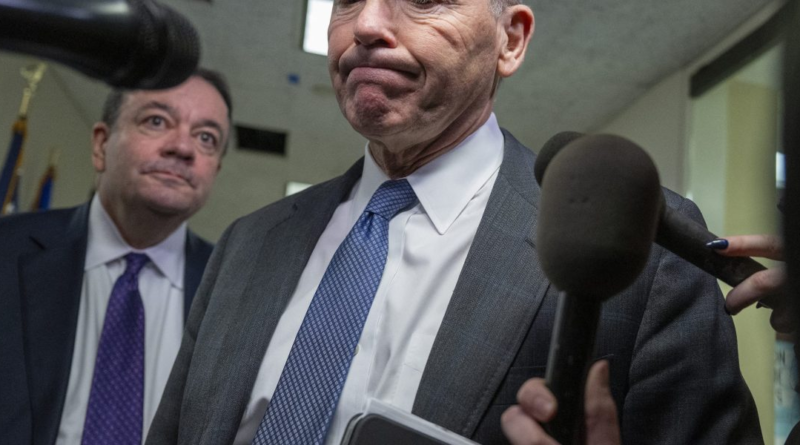Departing Boeing CEO Dave Calhoun cut his bonus in 2024 after the door plug flew off an Alaska Airlines flight
The Boeing board is pledging to get the airline manufacturer back on track, and new independent Chairman Steve Mollenkopf said in a letter that directors are focused on regaining the trust the company has lost in recent years.
He also said the board is taking a hard look at the way Boeing pays its management staff and that it cut each executive’s long-term incentive award by about 22%. That’s the same percentage the company’s stock declined between Jan. 5—the day of the Alaska Airlines Flight 1282 accident—and the grant date for the stock awards.
“I promise that I personally, and we as a Board, will leave no stone unturned in our efforts to get this company to where it needs to be,” said Mollenkopf in his independent chairman letter. “And the work of renewal has already begun.”
The company published its proxy report to investors today ahead of its annual shareholder meeting on May 17. In it, the board revealed that exiting CEO Dave Calhoun told the board he didn’t want his $2.8 million cash bonus in February after a Boeing-manufactured door plug flew off an Alaska Airlines plane. “The Board honored that request,” the company said in its proxy statement.
Boeing stock has dropped 27% year-to-date, and last month the company announced that Calhoun would exit along with board Chairman Larry Kellner and commercial airplanes division CEO Stan Deal. Calhoun switched sides from serving on the board to taking over the CEO role in January 2020, a time when the company was reeling from two airline accidents that resulted in the deaths of 346 people, dealing a significant blow to the manufacturer’s credibility.
Boeing has since paid $160 million to Alaska Airlines, which was only an initial payment to make Alaska whole after the airline grounded its fleet of 65 Boeing 737-9 Max airplanes.
Even without a bonus, Calhoun’s total direct compensation in 2023 was valued at $32.7 million, driven largely by stock grants worth $30 million. The company gave Calhoun a $21 million long-term, performance-based equity incentive grant in February 2023 that was intended to pay out in 2025. He can’t collect on the award until he leaves the company, and even then, he’ll get it in 10 annual installments. The board also gave him 25,000 restricted stock units valued at $5.3 million; half the grant vested this past February and the other half will vest in February 2025 if he’s still with the company. However, Boeing warned that there’s no guarantee that the grants will have that value if and when they vest.
The cut to long-term equity translated to Calhoun’s 2024 award target being lowered from $17 million to $13.25 million, which was a 38% reduction from his 2023 award of $21.25 million.
Calhoun also holds 175,435 options that are underwater, meaning Boeing’s current stock price, $183.14, is lower than the exercise price on the options. The first set doesn’t expire until February 2031, and the second set expires in February 2032. He could collect a total of $45.5 million if the next CEO can boost the stock price roughly 40%.
The company said Calhoun didn’t get a performance equity grant in 2020, his first year in the role, because Boeing never made adjustments to its comp plan to account for the Covid-19 pandemic, unlike other companies. “While the Alaska Airlines Flight 1282 accident shows that Boeing has much work yet to do, the Board believes that Mr. Calhoun has responded to this event in the right way by taking responsibility for the accident, engaging transparently and proactively with regulators and customers and taking important steps to strengthen Boeing’s quality assurance—not only within Boeing factories but in the supply chain as well.”
In addition to Mollenkopf’s promise to shareholders to turn Boeing around, he thanked Calhoun and Kellner. He said a probe of Boeing quality and risk processes run by Admiral Kirkland Donald remains ongoing.



